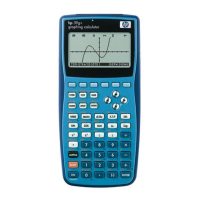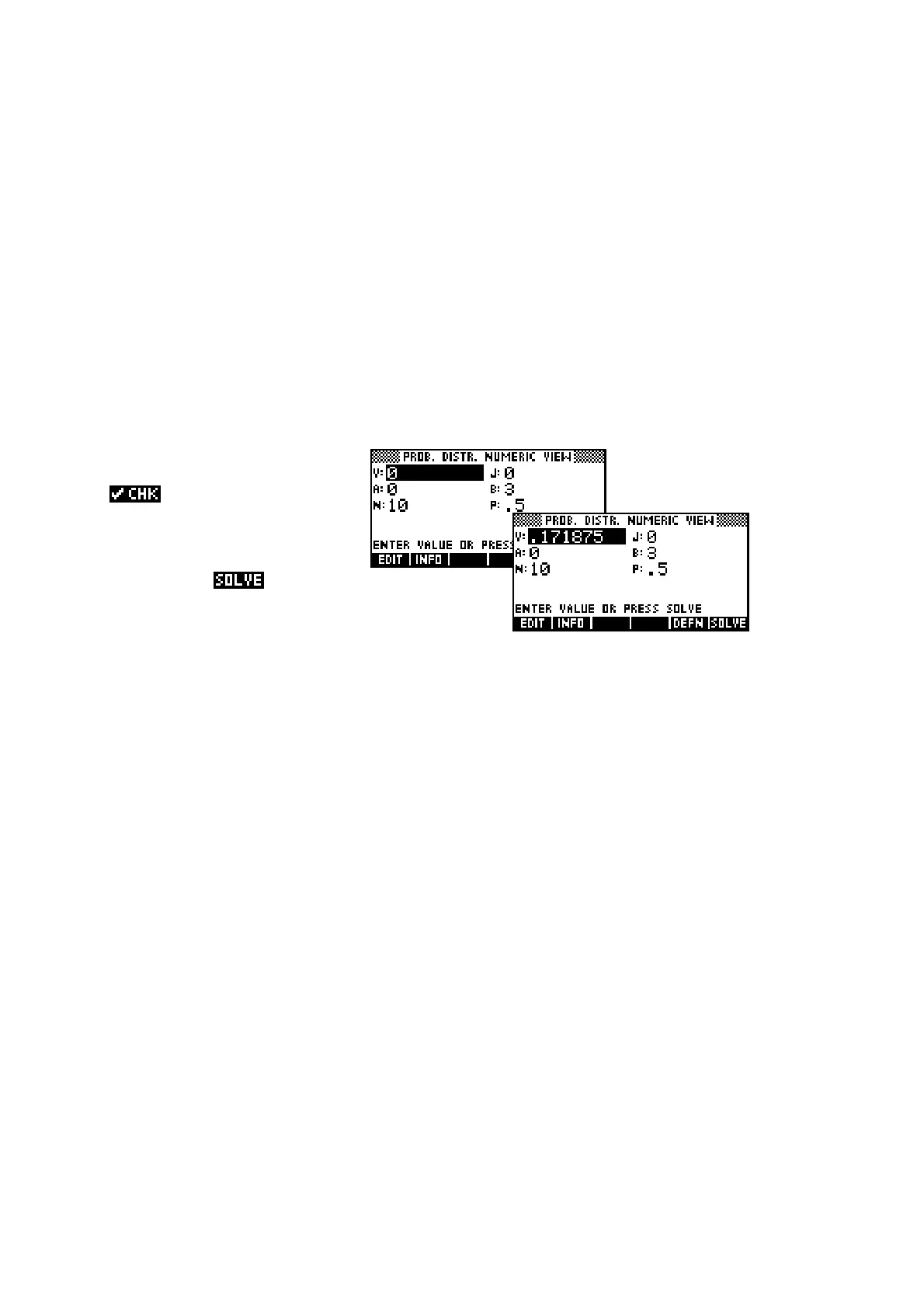193
E6: P=e^-(K*A)-e^(-K*B)
E7: P=UTPN(M, S
2
,X)
E8: P=1-UTPN(M,S
2
,X)
E9: P=UTPN(M,S
2
,A)-UTPN(M, S
2
,B)
E0: P=UTPN(M,S
2
,M-K)+ UTPN(M,S
2
,M+K)
These formulas can be used in the NUM view to solve problems involving the
probability distributions listed earlier.
Details on use
Equations E1 and E2 can be used for calculations involving individual and
cumulative Binomial probabilities.
eg. Find the probability of at most 3 heads when tossing a coin 10 times.
Ensure that formula E2 is
ed and enter the values
shown right. The value in J is
irrelevant as it is merely the
summation variable. Highlight
V and press .
Answer: 0.1719
Note: If your summation involves more than about 25 terms then a normal
approximation will be much faster than using this formula. Solve works
by repeated iterations converging on the correct value and this will be
quite slow if the summation has many terms.
Equations E3 and E4 can be used for calculations involving individual and
cumulative Poisson probabilities, where M is the mean.
The formula in E5 is a generic formula for problems such as the one below:
“A probability distribution has the equation
()
3
( ) 0.625 2 ; 0 2fx x x x=−≤≤. Show that this is a valid
probability distribution function and use it to find
)
1.2Px≤ ”
Use it by substituting whatever function is in use for the one currently
entered. As this formula involves the integration function, each use of the
solve process will require the hp 39g+ to perform multiple integrations.
Because of this the solving process will be relatively slow.

